Federal Republic of Germany / Bundesrepublik Deutschland – Let’s explore here
What’s it like in Germany?
Germany is an amazing country with a huge variety of beautiful landscapes. In a way, it’s much misunderstood in terms of tourism. In the south, where it borders the mountainous Alps, it has some of the most beautiful castles, towns and landscapes in Europe. The German Alpine route is a dedicated 300 mile (484km) road in the Bavarian Alps from Lindau to Königssee that takes in much of the best scenery in Germany.
With over 84 million inhabitants, it’s the second most populous country in Europe. It’s roughly the same size as Japan, about 1½ times the size of the UK. It has land borders with Austria, Belgium, Czechia, Denmark, France, Luxembourg, the Netherlands, Poland and Switzerland. Its highest point is Mount Zugspitze, at 9,718 ft (2,962 m) above sea level.
There are also numerous other scenic travel routes in Germany, including the German castle road and the German romantic road.
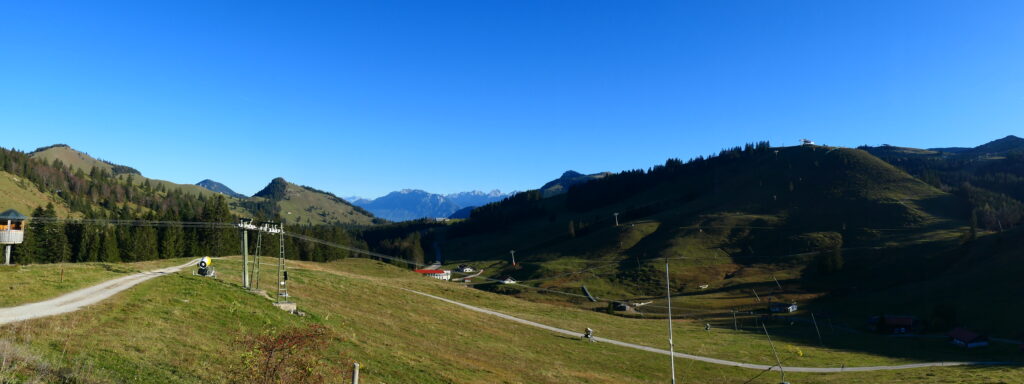
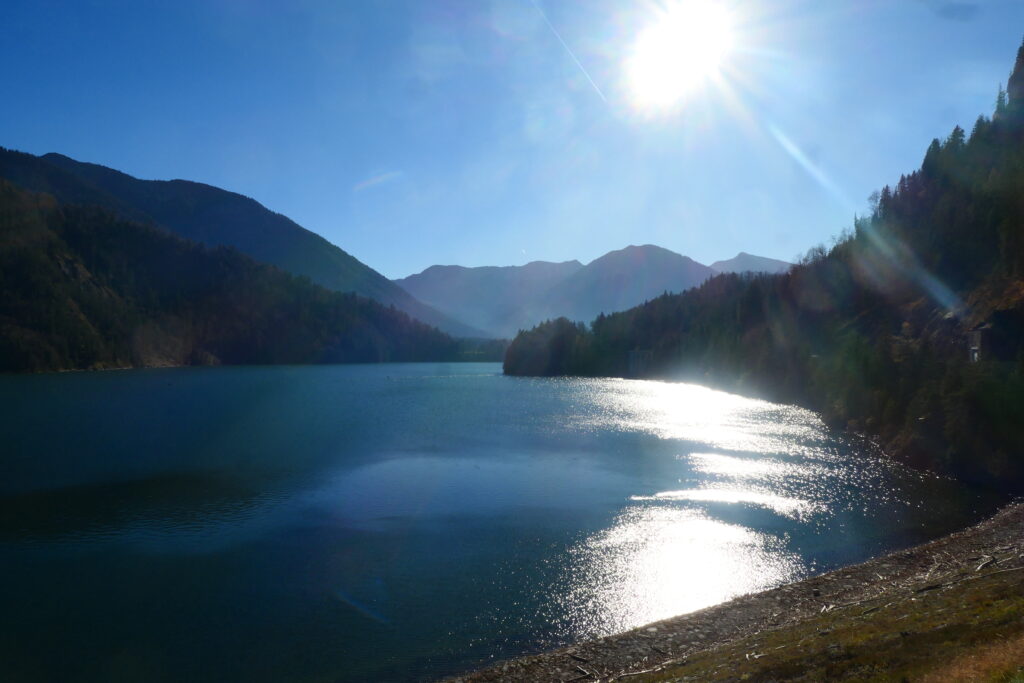
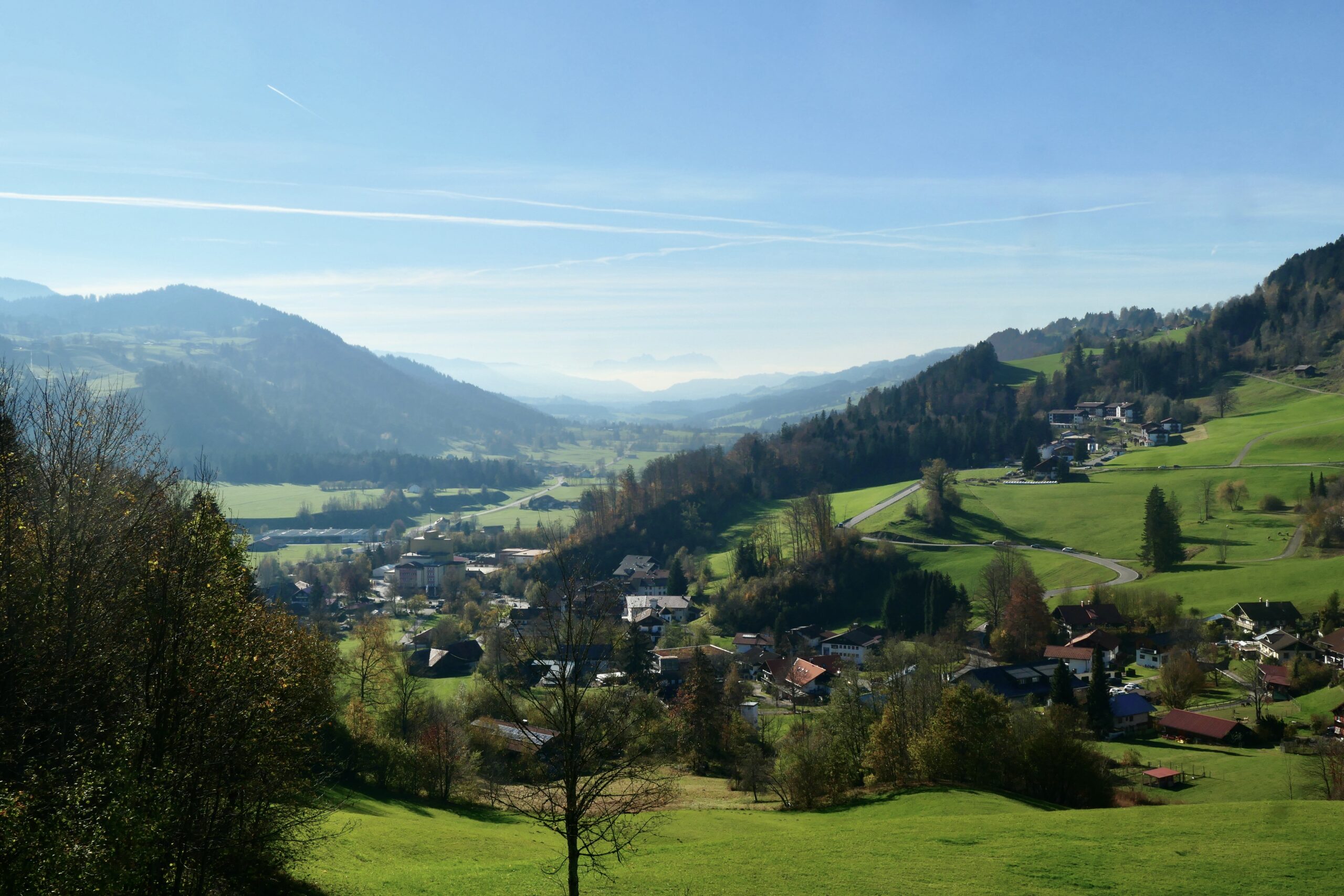
A bit about the history of Germany
Germany has a rich and complex history, shaped by its central location in Europe and significant cultural, political, and military developments.
Early History and Holy Roman Empire
Germany’s history dates back to the early medieval period when the region was part of the Roman Empire. After the fall of Rome, Germanic tribes established various kingdoms. In the 9th century, Charlemagne’s Frankish Empire formed the basis for what would later become the Holy Roman Empire, which included much of present day Germany. The Holy Roman Empire was a loose confederation of states and lasted until 1806.
German States and Unification
In the early modern period, Germany was fragmented into numerous states and principalities. In the 19th century, following the Napoleonic Wars, German-speaking states formed the German Confederation. The push for unification grew, and in 1871, under the leadership of Otto von Bismarck, the German Empire was established, uniting these states under Prussian leadership.
World War I and the Weimar Republic
Germany’s role in World War I (1914-1918) ended in defeat. The Treaty of Versailles (1919) imposed harsh penalties and territorial losses on Germany, leading to political instability. The Weimar Republic was established as a democratic government, but it faced economic crises, including hyperinflation and the Great Depression.
Nazi Germany and World War II
In 1933, Adolf Hitler and the Nazi Party came to power, establishing a totalitarian regime. Hitler’s expansionist policies led to the outbreak of World War II (1939-1945). Germany’s aggression resulted in widespread destruction across Europe, culminating in the defeat of Nazi Germany in 1945. The war caused immense loss of life, including the Holocaust, in which six million Jews were murdered.
Post-War Division and Reunification
After World War II, Germany was divided into East Germany (the German Democratic Republic), controlled by the Soviet Union, and West Germany (the Federal Republic of Germany), controlled by the United States, the UK and France. The Cold War created a sharp division between the capitalist West and the communist East. In 1990, following the fall of the Berlin Wall and the collapse of the Soviet Union, East and West Germany were reunified.
Modern Germany
Today, Germany is a democratic republic and one of the leading economic and political powers in Europe. It is a founding member of the European Union, NATO, and the United Nations. Germany plays a key role in global diplomacy, economic affairs, and technological innovation, having transformed into a prosperous, unified nation after decades of division.
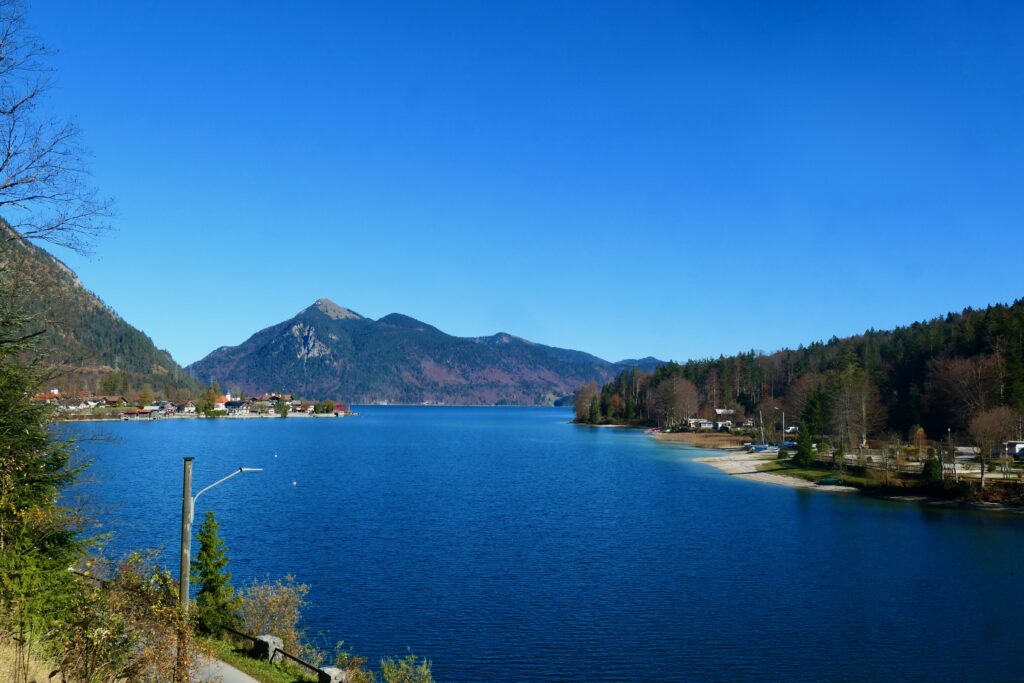

Germany road trip
Our German road trip was part of a much larger European road trip. In 2024, we took a much more leisurely approach to travelling through Germany. Our German road trip involved us travelling from the outskirts of Basel in Switzerland, along most of the German borders with Switzerland and Austria, on the magnificent German Alpine route. There’s more information on the is route below.
At the eastern end of the Deutsche Alpenstrasse, as its known locally, we drove up to the traditional German towns of Fridolfing and Schollbrunn, before heading back to the Netherlands.
Map of our road trip through Germany in 2024
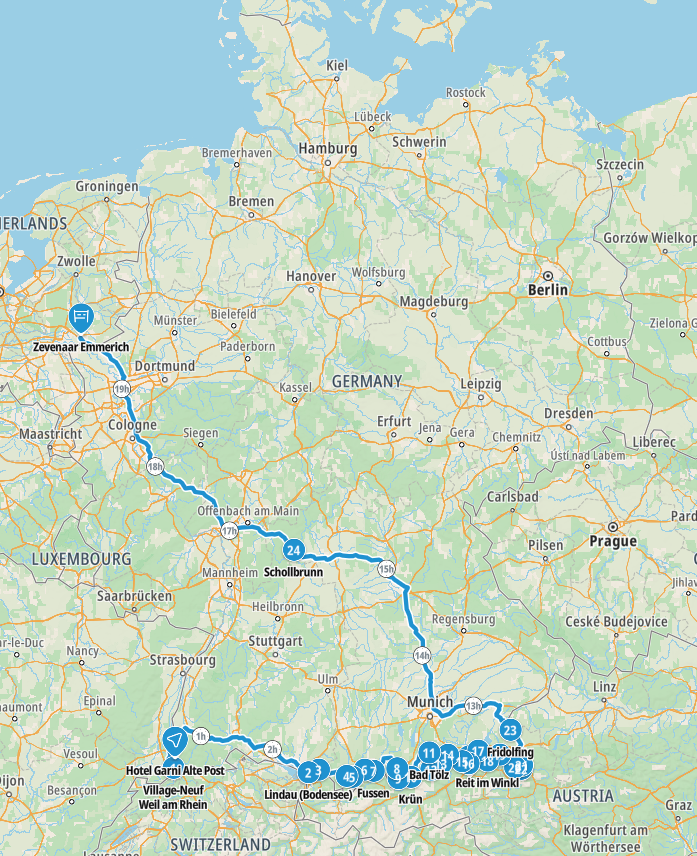
This is a map of our German road trip that took us from Basel – Lindau – Scheidegg – Sonthofen – Bad Hindelang – Pfronten – Fussen – Oberammergau – Garmisch-Partenkirchen – Krün – Bad Tölz – Kreuth – Schliersee – Oberaudorf – Söll – Aschau im Chiemgau – Reit im Winkl – Ramsau Bei Berchtesgaden – Berchtesgaden – Königssee – Fridolfing – Schollbrunn – Zevenaar Emmerich
Previous German road trips
We created a blog for our 2023 road trip in Germany. You may find it helpful, and you may pick up some tips, or more likely mistakes not to make that we’ve made 😉 Our German road trip was part of a much larger European road trip.
In 2023, our German road trip took us from the east of the Netherlands, through Bremen to Oyten in Germany, before heading up to Fehmarn at top speed to catch the ferry to the island of Lolland in Denmark.
As this was close to the beginning of our monumental 25,000 mile (40,000 km) road trip across most of the countries in Europe, we didn’t spend masses of time in Germany, particularly as we’ve been so many time before.
Map of our road trip through Germany in 2023

This is a map of our quick German road trip in 2023, from Laren in the Netherlands through to the ferry for Denmark.
Our favourite places in Germany
These are some of the best places that we explored on our road trip through Germany. We’ve put them in alphabetical order.
Freiburg im Breisgau
Freiburg is a large city in south west Germany, close to the borders of France and Switzerland. There are about ⅔ million people in the metropolitan area, although the city centre never feels that busy with traffic.
It’s practically the gateway to the Black Forest, and so does get quite busy with tourists throughout the year. It holds an excellent Christmas market as well, which is highly recommended!
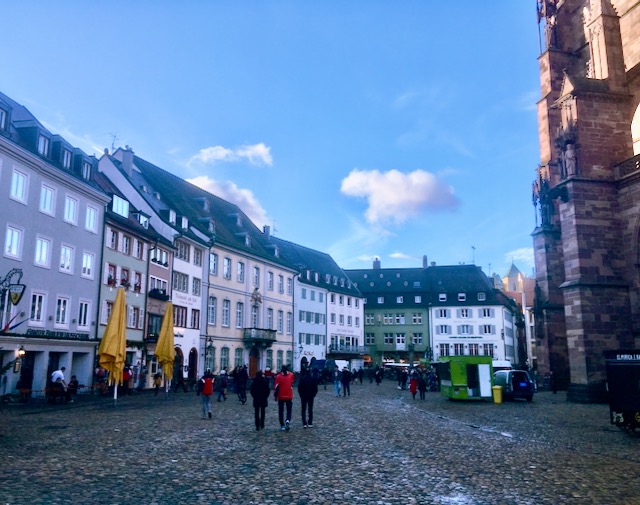
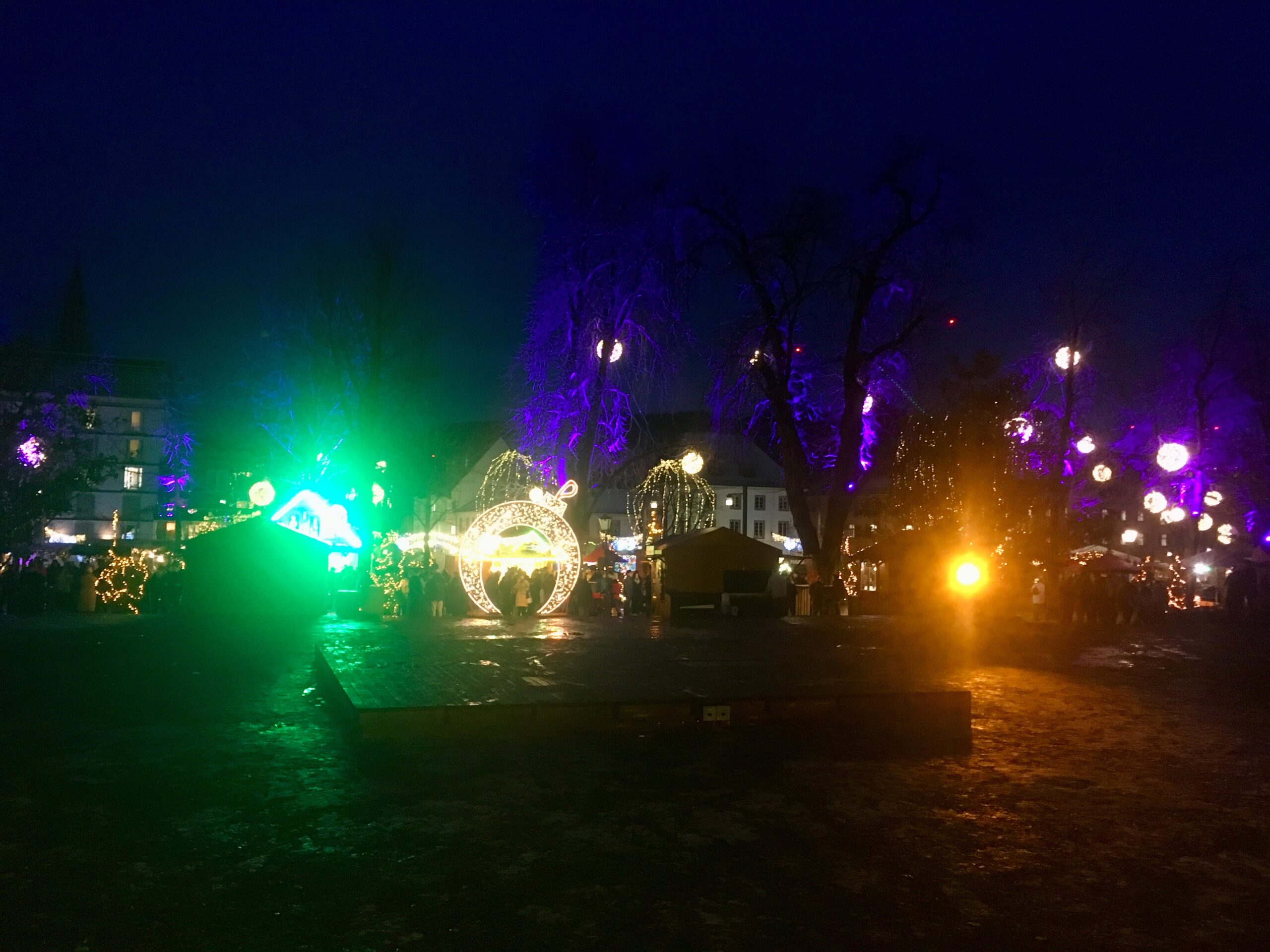
German Alpine Route
The German alpine route is the oldest touring road in Germany, having been established in the 19th century. It travels along much of the border with Austria, and takes in lots of lovely traditional villages and towns, as well as great mountain roads.
This is a map of the German alpine route. It travels from Lindau – Scheidegg – Sonthofen – Bad Hindelang – Pfronten – Fussen – Oberammergau – Garmisch-Partenkirchen – Krün – Bad Tölz – Kreuth – Schliersee – Oberaudorf – Söll – Aschau im Chiemgau – Reit im Winkl – Ramsau Bei Berchtesgaden – Berchtesgaden – Königssee.
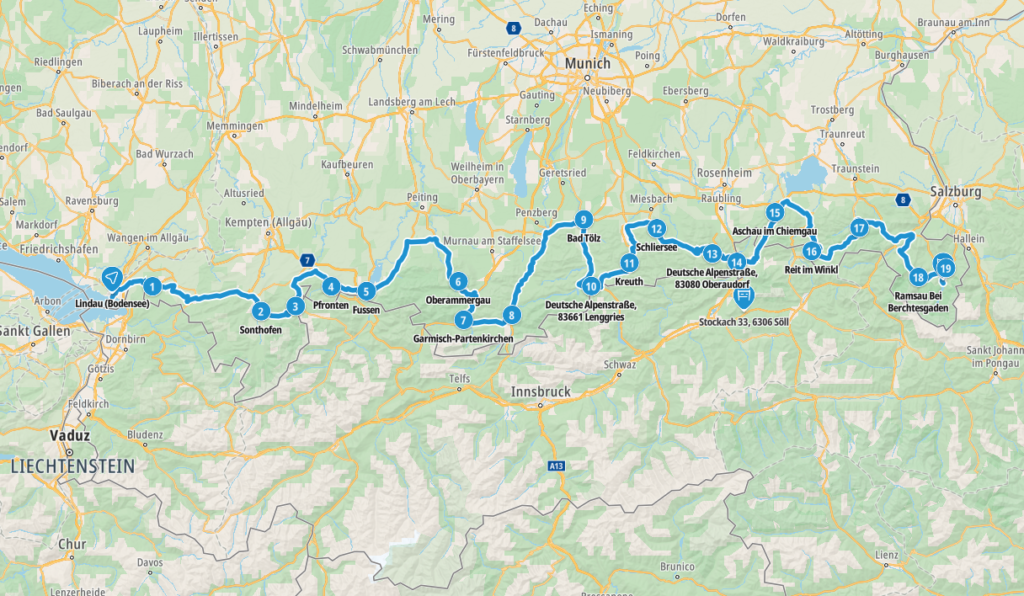



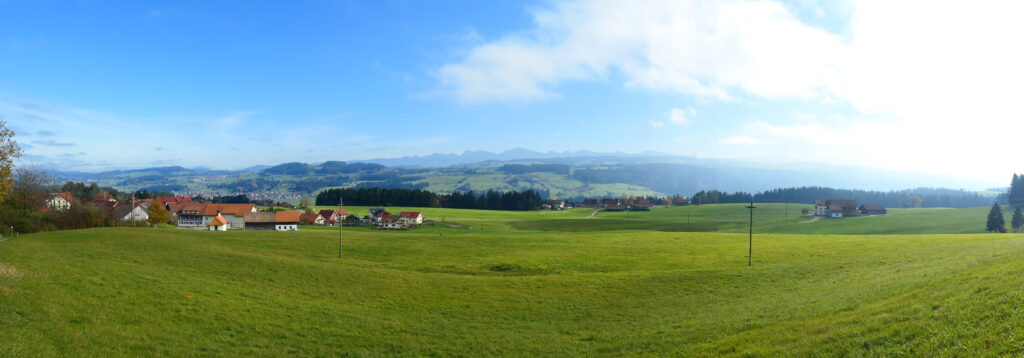
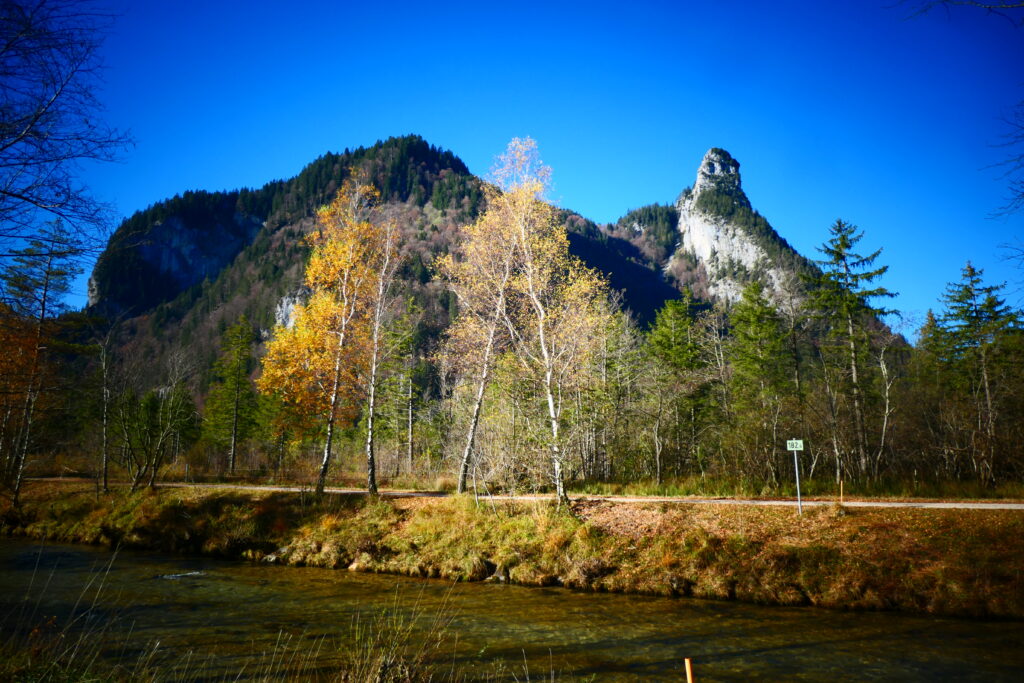


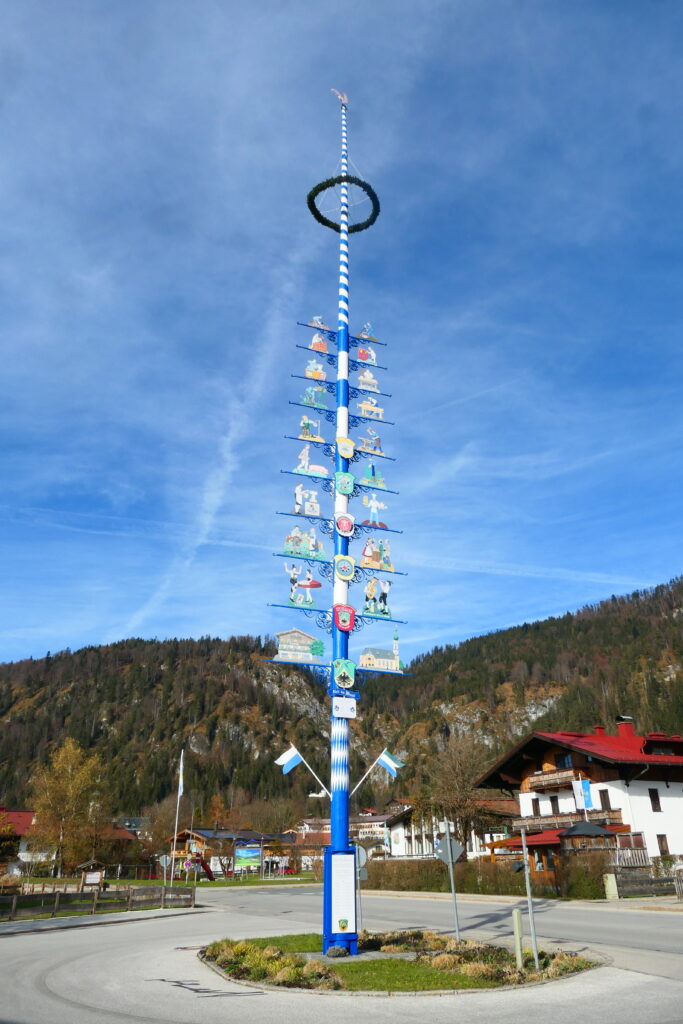
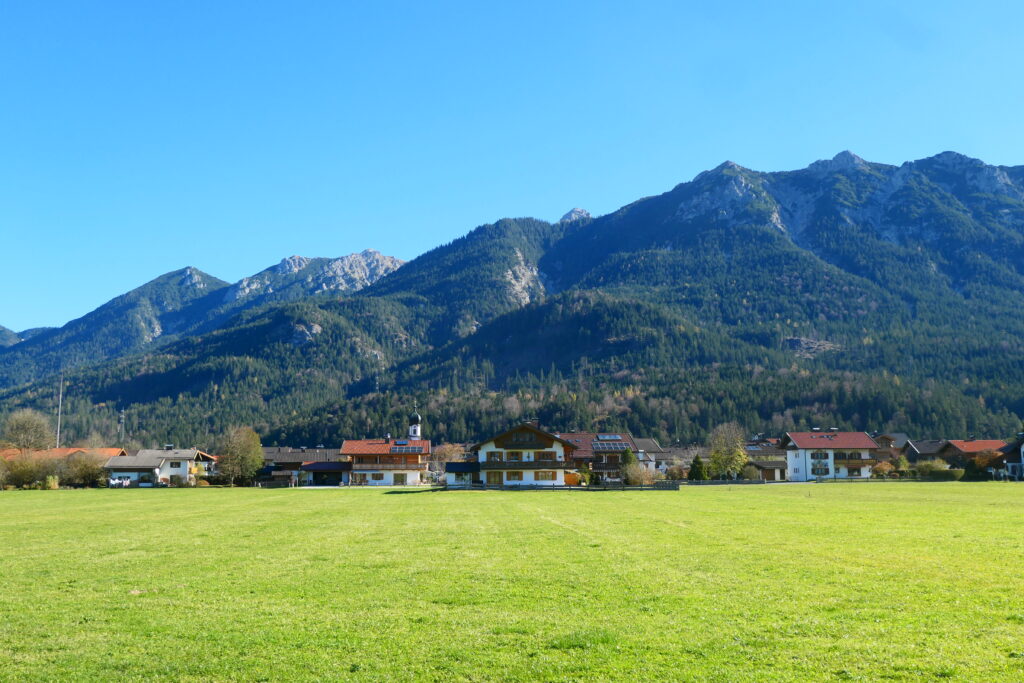
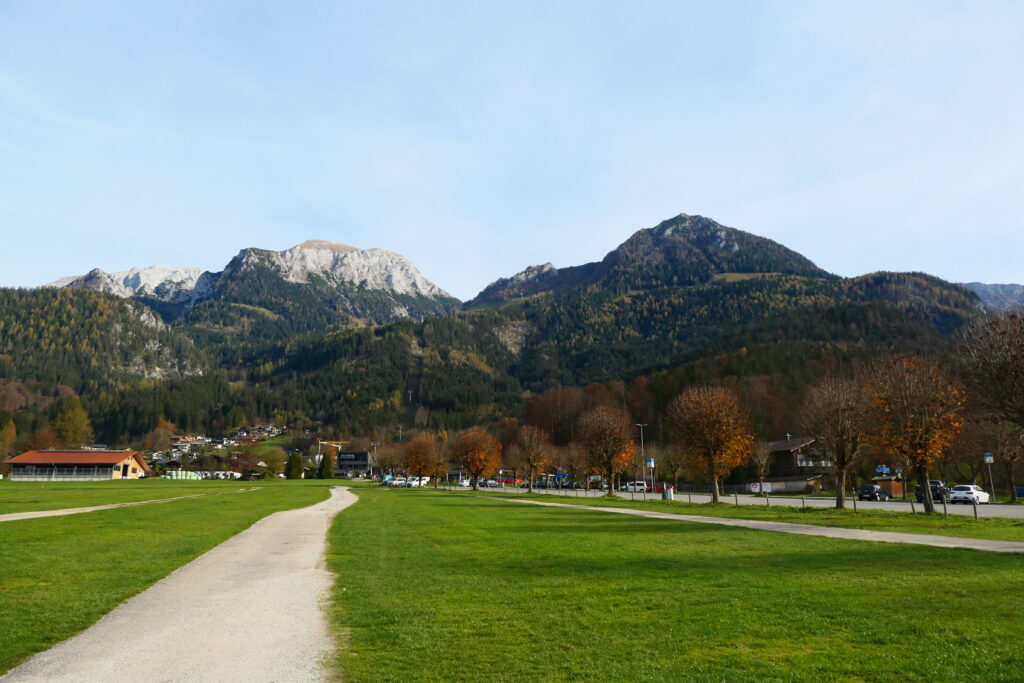

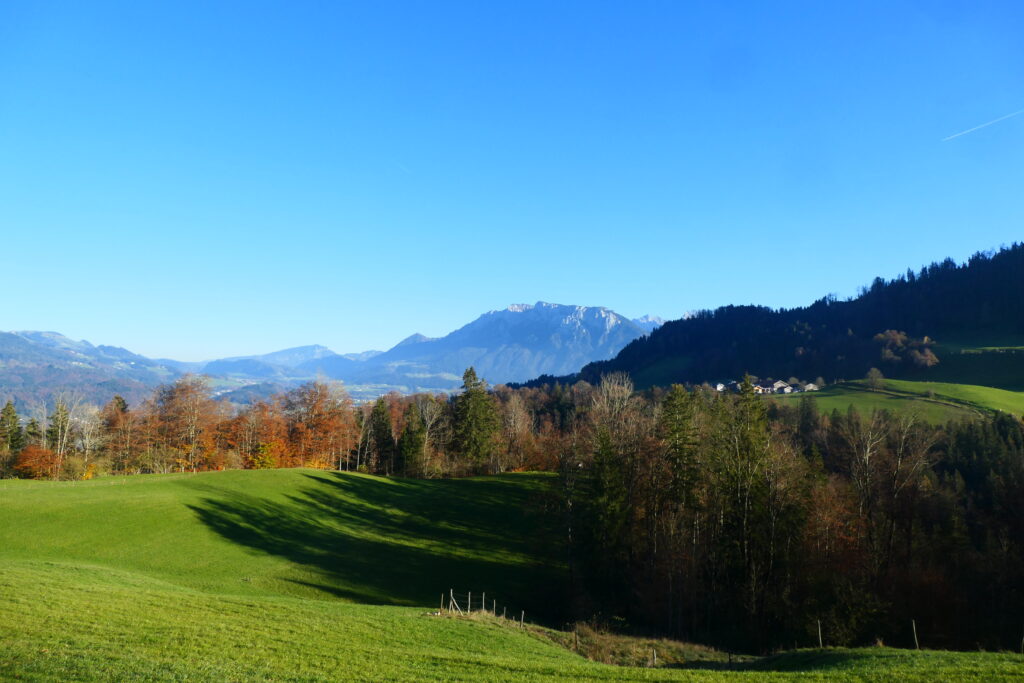
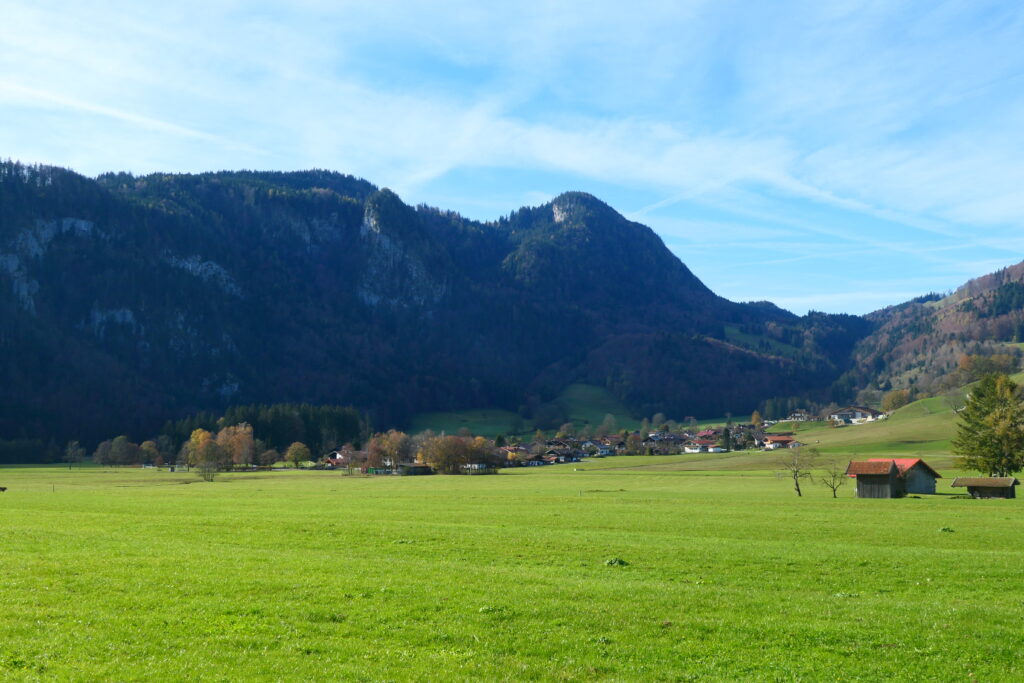

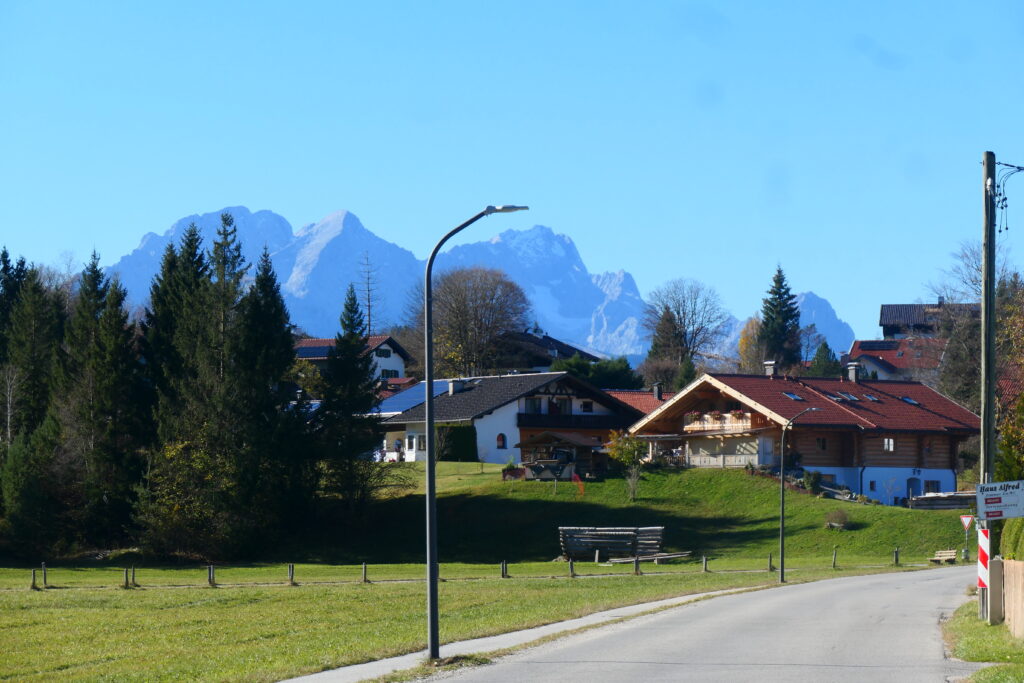

Titisee-Neustadt, Baden-Württemberg
Titisee-Neustadt is both a spa town and a winter sports town. Its a great little place for a visit, having a lovely lake and some decent cafés. Being near the black forest, the gâteau is very popular!
Many of the roads driving to the town are pretty mountainous and therefore spectacular. There’s also loads of parking availability.


Tittmoning
Tittmoning is a small town of around 6,000 people in south east Germany, close to the border with Austria, and not far from both Salzburg and Munich.
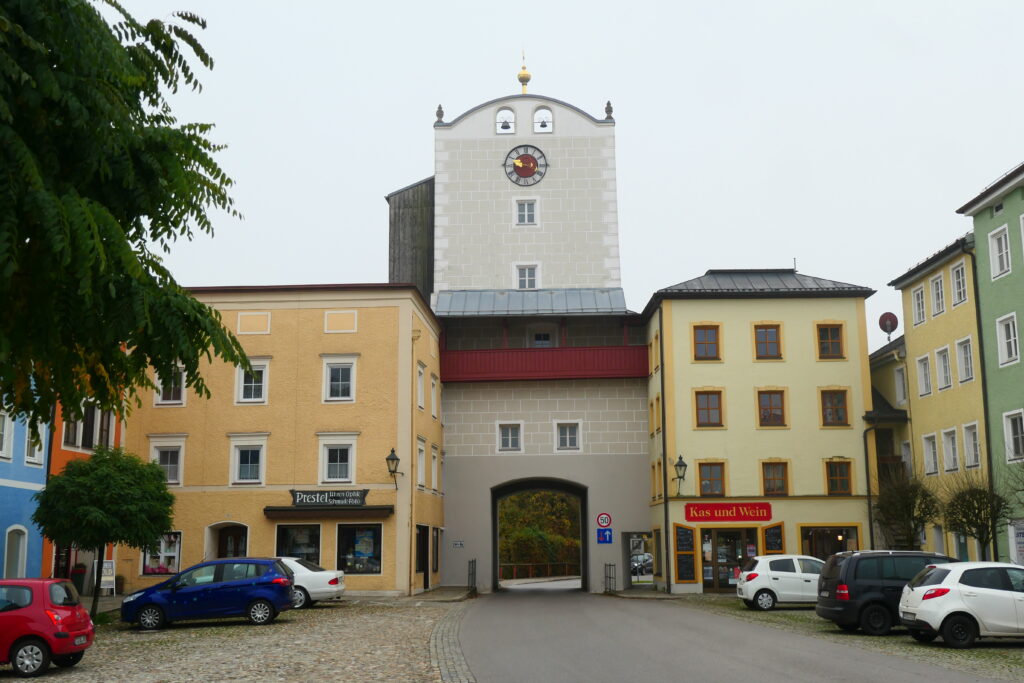
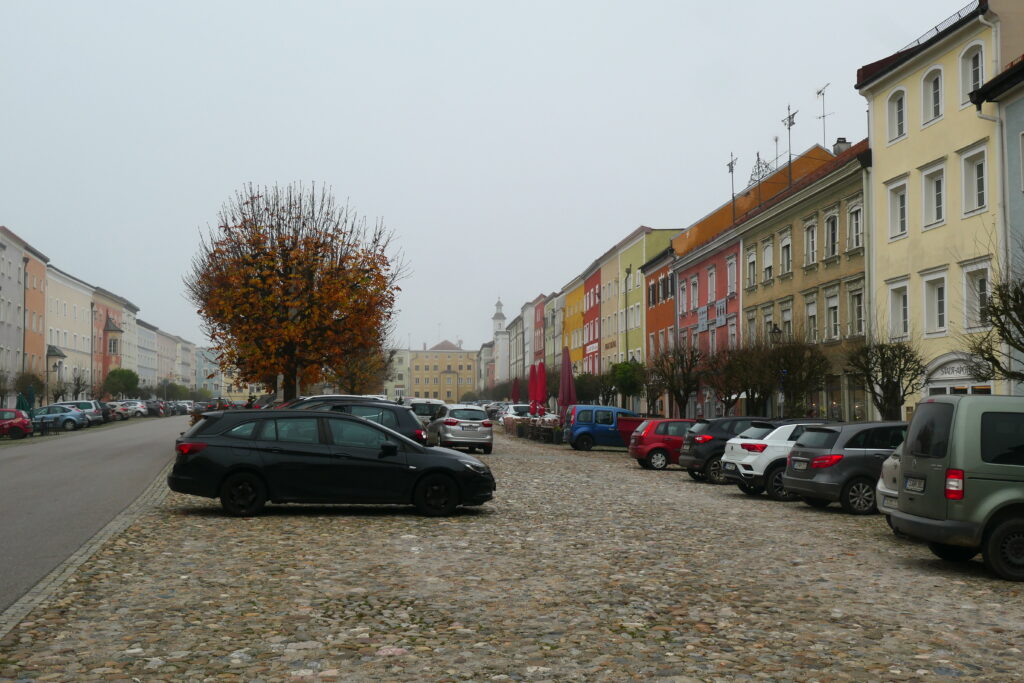
What’s it like to drive in Germany?
Germany is a populous place with a great deal of car ownership, and as such can be extremely busy on the main routes, with lots of traffic traveling at high speeds. If you’re used to travelling at a more sedentary pace on rural roads, it can be quite intimidating.
German autobahns
Germany is famous for its autobahns and the Nürburgring. Despite the reputation with fast driving, like many things in Germany, there is a great deal of order to travelling. Even on the autobahns, when there is no official speed limit on many sections, vehicles tend to average around 90 miles per hour. In general they do not tend to belong to the Colin McRae school of driving!
That said, there are certain pretty straight sections of motorways that are particularly quick, and some drivers take definite advantage of that, including me sometimes, I have to say! If you’re a careful driver, best to keep to the two slower lanes. However, most drivers in Germany are pretty good and will allow you to use the fast lane no matter whether they’re travelling at 140mph or otherwise!
What are the speed limits in Germany?
As with almost everywhere on the continent of Europe, they drive on the right hand side of the road in Germany.
The speed limits for cars in Germany are:
- 30 mph (50 km/h) for urban driving
- 60 mph (100 km/h) outside of built up areas
- 80 mph (130 km/h) on dual carriageways
- Unlimited on motorways with white sign
Road signage is excellent, making it a simple affair to navigate your way around. There are, of course, upgrades to roadworks everywhere, in particular on the main motorway routes, although they are not as prohibitive and don’t last as long as those in the UK!
Order is the name of the game in Germany. Should you make a minor traffic infringement, many drivers will take it upon themselves to inform you of your error! This mainly involves flashing their lights at you frantically and beeping their horns! Almost worth the effort 🙂
Do you require an international driving permit in Germany?
We’ve created a dedicated page to driving abroad, which answers this question, and more, which you might find helpful.
Can you use your UK driving license when driving through Germany?
We’ve created a dedicated page to driving abroad, which answers this question, and more, which you might find helpful.
Do I need a carnet de passages to drive in Germany?
We’ve created a dedicated page to driving abroad, which answers this question, and more, which you might find helpful.
What currency do they use in Germany?
In Germany they use the Euro. The use of credit / debit cards is now widespread. Traveller’s cheques are accepted. There are lots of ATMs.
You should make yourself aware of the amount that your bank charges you for using credit and debit cards abroad. Often credit cards are cheaper for purchasing items directly, and for withdrawing cash from ATMs.
What language do they speak in Germany?
They speak German in Germany. More than half the population speaks English.
What time zone is Germany in?
Remember, when you’re planning your next trip to take a look at what time zone it’s in.
Do I need a visa to visit Germany?
We’ve created a dedicated, more comprehensive page on visas, which you should find helpful. Check it out!
Is wild camping legal in Germany?
No, wild camping is illegal in Germany, although it is well tolerated.
What plug / socket type do they use in Germany?

In Germany they use plug / socket type F.
Health issues in Germany
Is it safe to drink water in Germany?
Yes, it is safe to drink tap water in Germany. Bottled water is also readily available across the country.
What vaccinations are required for Germany?
This NHS website is kept up to date with all relevant information on vaccinations in Germany.
Phones in Germany
What is the country calling code for Germany?
The country calling code for Germany is +49
What are the emergency phone numbers in Germany?
- The emergency number for police in Germany is: 110 / 112
- In Germany, the emergency number for ambulance is: 112
- The emergency number for fire in Germany is: 112
If you’ve got some useful info that you’d like to share, let us know!
And don’t forget to check out all the other pictures!
